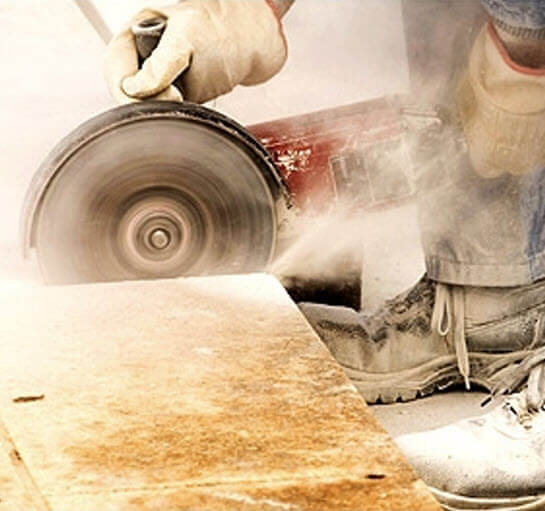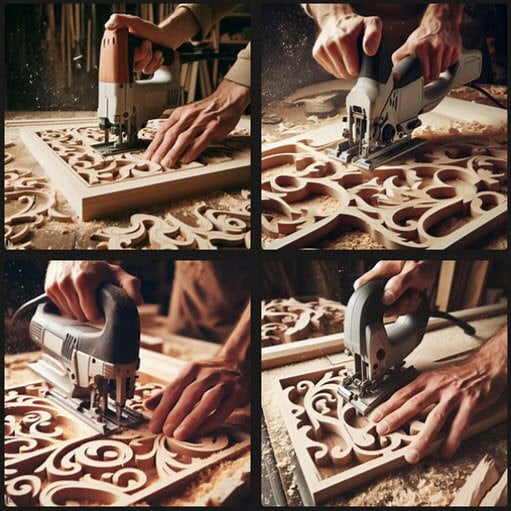
Best Saw Blades for Cutting Stone (& Other Hard Things)
Cutting stone like granite requires a diamond saw blade because of the hardness of the material. Same for other types of stone, like marble and slate, as well as concrete, brick, or ceramic tile.
Granite may be one of the hardest stones, but diamond is the absolute hardest known natural material. It can cut through anything. That's why we use it in our Timberline® Diamond Saw Blades for Concrete and Masonry.
These circular steel blades have diamond-impregnated grit on the rims, containing a mixture of metal powder, diamond powders and industrial diamonds of different sizes and qualities, depending on the different types of material to cut.
And by "cut" we really mean, grind.
When cutting stone with a diamond-impregnated saw blade, the process is more like grinding than traditional cutting. The diamonds embedded in the blade grind away the material as the blade moves through the stone.
It's a subtle difference, but with saw blades, cutting typically implies a shearing or slicing action, where the material is separated by a sharp edge.
In contrast, grinding implies wearing away the material through abrasion or friction. The action of a diamond-impregnated saw blade on stone is more about abrasion, making "grinding" a more accurate description of the process.
Why does this matter? Because, cutting stone (/grinding stone) creates a LOT of dust.
So. Much. Dust.
If you cut it dry, you definitely want to work outside in a well-ventilated area.
You can also use a wet saw to reduce the dust, which has the added benefit of keeping your blade cool, preventing overheating and reducing friction.
But, the water will mix with the dust, creating a sludge which will drip down to your floor. (And there will still be some dust, anyway.)
If you use a wet saw, you probably also want to work outside, or, if you can't - lay down a tarp.
Either way, make sure you use a mask, safety glasses, and hearing protection.
There are 3 basic types of diamond-impregnated saw blades:
Continuous Rim Diamond Saw Blades

Continuous rims are better on ceramic and other material where chipping can be a problem. Ours provide ultra smooth, chip-free cutting in ceramic tiles, as well as marble and even porcelain.
The individual diamond crystals exposed on the edge and sides of the rim do the cutting.
As you push the rotating blade into the surface of the material, the diamonds cut/grind a groove in the material. While the blade cuts, the material exerts wear on the blade exposing the diamond grit on the rim. This causes the diamond grit to wear away and expose more diamond grit underneath, thus grooving the material.
Segmented Rim Diamond Saw Blades

Segmented blades are ideal for cutting concrete block, concrete, concrete pavers and other abrasive materials. The more abrasive the material the faster the tendency to wear down the rim.
They can also be used on slate, or granite. However, the cut might not be as smooth as with a continuous blade.
They provide the longest life at the lowest cost per cut. The segmented gullets provide faster, cleaner and cooler cuts. These blades should be used only where chipping is not a problem.
Turbo Diamond Saw Blades

Turbo Diamond blades offer the best of both worlds.
This is a combination of the continuous and segmented designs. It has a serrated or wavy rim that gives faster cutting speed and provides a somewhat smoother cut than a purely segmented blade.
They are ideal for cutting concrete, brick, pavers, as well as slate, granite and marble.
These diamond saw blades are sintered with a serrated cutting edge to stay in constant contact with the material.
They produce a smoother cut than the segmented blades, but, they have a longer life than the continuous rim blades.
Sinter, Who?
In the context of diamond tooling (like a saw blade), "sintered" refers to a process by which the diamond grit is embedded into the tool through a heating method, but without fully melting the base material.
This creates a strong bond between the diamonds and the tool's matrix. A sintered blade typically offers a longer life because as the outer layer wears away, new diamond grit is exposed, allowing for continued cutting.
Trust us - it's a good thing.
Serrated, What?
A serrated cutting edge is a blade edge that is not smooth but has teeth or grooves.
This design is somewhat of a hybrid between a continuous rim and a segmented rim. A serrated edge can help with faster cutting and better cooling of the blade.
It provides a combination of speed (like you'd get with a segmented blade) and a smoother cut (like you'd get with a continuous rim).
Additional Considerations:
Safety Precautions: Cutting stone can be hazardous, so it’s important to wear appropriate personal protective equipment, including safety glasses, ear protection, and a dust mask if dry cutting.
It’s also important to ensure that the stone is properly secured to prevent movement during cutting.
Blade Speed: The speed at which the blade is operated affects the efficiency of the cut. Operating at the recommended speed for the blade and material is important to achieve optimal results and prevent blade damage.
Blade Wear: Over time, the diamond particles on the blade wear away and become less effective. Regularly checking the blade for wear and replacing it as needed is essential to maintain cutting efficiency.
Machine Type: Diamond-impregnated saw blades can be used on a variety of machines, including handheld cutters, table saws, and large stationary cutting machines, depending on the size of the stone and the type of cut required.
Always read and follow the operating and safety instructions in the power tool owner’s manual before using.


Download a complete set of our Free Safety Posters here.





